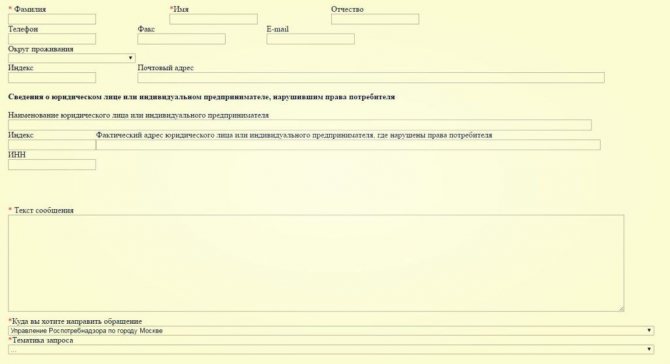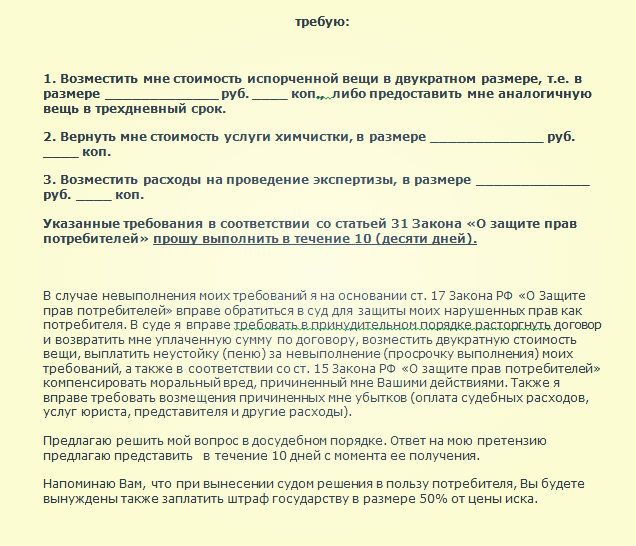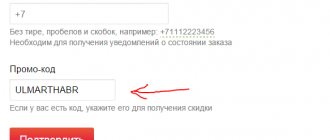Situations where dry cleaning has ruined a fur coat or fur coat are not isolated. Of course, the culprit will want to avoid responsibility. But the legislation provides many opportunities that will force the organization to compensate for the damage caused. The main thing is to correctly justify your claims.
What to do if the dry cleaner denies guilt
A fairly common situation is when, in response to a client’s demand to return money for poor-quality cleaning, a company employee receives an unequivocal refusal. In this case, the client should take the following actions:
- Send the damaged item for merchandising examination using the services of one of the private companies in the city;
- Make sure the receipt is safe.
- Be sure to keep your receipt. If the examination reveals that the defects appeared as a result of poor quality cleaning of the product, then the dry cleaner will have to reimburse you for the costs of the examination.
- If the dry cleaner is confirmed to be at fault, the next step is to formalize and file a claim.
Is an examination needed?
When a dry cleaner expresses clear disagreement with the claims presented, a citizen can turn to an independent expert. There are two types:
- Technological examination, which identifies the cause of the defect. If the product has deteriorated due to non-compliance with the rules of chemical processing, then such a conclusion is considered an important argument for filing a claim.
- Commodity examination is carried out in the absence of a sales receipt for the item. This procedure helps to establish the market price of the product taking into account its wear and tear.
All services provided by the examination are paid for by the citizen. If the court sides with the client, the dry cleaner will have to reimburse the amount spent on the examination as well.
Attention
The result of the examination plays a big role in proceedings and disputes. All evidence starts from her. If it shows that the cause of the defect was improper processing of the item, then the dry cleaner is forced to pay compensation to the client.
Making a claim
If the dry cleaning company’s fault is nevertheless confirmed, you should proceed to filing a claim addressed to the director of an enterprise specializing in cleaning things.
The claim petition must be drawn up in the format of two copies, one of which will be submitted to the administration of the cleaning company for consideration, and the second, with a mark of receipt, will remain in the hands of the applicant.
As for the contents of the document, when drawing it up the following information should be indicated:
- Description of the identified defects in the item;
- Description of the item before dry cleaning;
- Indication of the presence of appropriate markings on things, according to which they can be cleaned with chemical compounds.
In addition, the complaint should mention that when accepting the item, the dry cleaning employee did not warn about possible damage to the item due to chemical exposure.
- Requirements for dry cleaning with reference to Articles 29 and 35 of the Law “On Protection of Consumer Rights”;
- Listing the list of attached documentation confirming what is described in the main part (photocopy of the receipt and the results of the merchandising examination, payment documents for the item itself, etc.);
- Date and personal signature of the applicant.
What are you entitled to if an item is damaged or lost?
If we return to the law “On the Protection of Consumer Rights”, it clearly states that it is the enterprise that is responsible to the customer for the safety of the item taken into work.
If during the work the item was damaged or, even worse, lost, the consumer has the right to demand compensation for damage from the dry cleaner.
It could be:
- refund of the cost of the company’s services – in case of minor defects;
- reimbursement of the cost of the item twice as much - if the item is lost or is not subject to further use for its intended purpose.
When making demands, reference should be made to Art. 35 paragraph 1 above the prescribed law.
You can expect to receive compensation only after the dry cleaner’s fault has been fully proven.
Going to court
If after 10 days there is no response from the dry cleaner or it refuses, you should proceed to the next stage - filing a claim in court.
In addition to the drawn up statement of claim, the client will need to take care of collecting the necessary list of documentation, namely:
- Dry cleaning receipt;
- The act of acceptance and transfer of a thing;
- A receipt confirming payment for the service;
- Payment documents for the item itself, confirming its value;
- A photocopy of the claim confirming the client’s attempt to resolve the situation at the pre-trial stage.
As a claim, the plaintiff has the right to indicate:
- Compensation for material damage (damage to things) in a double amount;
- Compensation for independent conduct of commodity examination;
- Penalty and penalties for additional expenses that the client was forced to incur.
How should the receipt be formatted?
To avoid problems with getting a refund for an item damaged in dry cleaning, you should carefully read the receipt that is issued at the time you receive the item. So, it should contain the following information:
- Legal address of the dry cleaner;
- Client details (full name, residential address, contact phone number);
- Type of service provided;
- The name of the product that is being cleaned, including a description of its color, composition, accessories, stains and stains that should be removed;
- Reception date and period during which the order will be executed;
- Service cost;
- Signature of the seller and employee at the reception point.
Experience as a lawyer since 2003. Graduated from the Moscow State Open University with honors. Specialization: consumer protection.
Your email will not be published. Required fields are marked *
Claim for improper provision of dry cleaning services and payment of the amount of material damage
entered into an agreement with ……………………………………………………… for the provision of chemical services to me (name of dry cleaning)
cleaning ……………………………………………………………………………………… for elimination (name of the product dry-cleaned)
which is confirmed by the presence of a cash (sales) receipt in the amount of ……………….. rubles and receipt No. …………………..…
Before contacting ……………………………………………………… the product was not cleaned. (name of dry cleaner)
“…..” ………….. 20….g. When accepting the work, shortcomings : …………………………………………………………………………………………..……….
At my request……………………. was left to eliminate the detected (product name)
“…..” ………….. 20….g. upon re-admission, it was discovered that former deficiencies …………………………………….……………… and new deficiencies
I refused to take ……………………………. (product name)
In accordance with .1. Article 35 of the Law of the Russian Federation “On the Protection of Consumer Rights” in the event of complete or partial loss (damage) of material (thing) accepted from the consumer, the contractor is obliged to replace it within three days with a homogeneous material (thing) of similar quality and, at the consumer’s request, manufacture the product from homogeneous material (thing) within a reasonable time, and in the absence of homogeneous material (thing) of similar quality - to reimburse the consumer twice the price of the lost (damaged) material (thing), as well as the costs incurred by the consumer.
Cost ..………………………… according to the sales receipt ……………….….. rubles. (product name)
In connection with the above, I demand compensation for :
1. Double the cost of the damaged ..………..…………………………….. in the amount of (name of product)
2. Dry cleaning costs in the amount of
In accordance with Art. 22 of the Law of the Russian Federation “On the Protection of Consumer Rights”, please notify me of your decision at the above address within 10 days.
If I refuse to voluntarily satisfy my legal demands, I will be forced to go to court with a claim for forced collection of:
— double the cost of the damaged ..………..…………………………….. ; (name of product) - dry cleaning costs — expenses for paying for an independent examination; — expenses for legal services; — costs of paying legal fees; — a fine to the state in accordance with clause 6 of Article 13 of the Federal Law “On the Protection of Consumer Rights” for failure to comply with the voluntary procedure for satisfying consumer requirements.
- A copy of the receipt for the provision of services (dry cleaning),
- A copy of the sales receipt for the product.
Help other people find this sample dry cleaning claim. Share it on social networks.
Court with dry cleaning
If the management does not want to compromise, you should file a claim in court against the dry cleaner at its location, how to write a claim in court for the protection of consumer rights. Also indicate in the application that you are requesting compensation for material damage, expenses and moral damage. You can contact the prosecutor's office and some regional organizations.
Practice shows that a dry cleaning court rarely fully satisfies the claims of victims. Often the judge takes the plaintiff’s side, but to be sure, you should use the services of a lawyer.
What can you demand in court in a dispute with a dry cleaner?
In court, it is important not only to focus your attention on the amount of the damaged item, but also on a number of opportunities that the Federal Law “On the Protection of Consumer Rights” gives you. Haven't received a response to your complaint? Or if your claim was rejected, then in court there is a penalty for protecting consumer rights after a claim (follow the link for more details on the issue of penalties).
If you decide to resolve a dispute with a dry cleaner in court, then you should know the following, namely:
- To recover from the defendant the amount of the damaged item;
- Collect from the defendant a penalty of 3% for each day of delay;
- To recover moral damages for the worries and nerves you suffered;
- Collect a fine in the amount of 50% of the amount awarded by the court in favor of the consumer.
USEFUL: watch the video with additional tips on filing a lawsuit against dry cleaning
The dry cleaner will pay double for a damaged item.
- Where is the hole? She was here!
How to protect your favorite fur coat or sheepskin coat when dry cleaning it? What to do if the item is damaged? Let's look at stories sent in by our readers.
It fades - no one answers.
Irina decided to dry-clean her dark green sheepskin coat, purchased at a company store. The receptionist began to fill out the receipt, in which Ira was immediately confused by the clause: the dye is unstable, the dry cleaner is not responsible for failure. The client was surprised: the thing is expensive, branded, what makes you think that the dye is weak? “This is a standard receipt, we always write this way,” the receptionist answered without blinking an eye.
A dry cleaning receipt is not a multi-page contract, so many clients, thank God, read it before signing. Receptionists often try to hush up questions that arise, reassuring them: this is an approved standard, this is how they always write, etc.
Most often, the pitfalls are hidden in the following points:
Description of the appearance of the item.
Usually the receptionist fully emphasizes the standard phrase: general dirt, road dirt, creases, abrasions, stains, etc.
Keep in mind: such a “picturesque” set indicates considerable wear and tear on the item, and if the clothes are damaged, the amount of compensation will be less. On the other hand, by attributing extra dirt, you can be scammed out of money: the general cleaning of such a “grimy” item is listed on the price list as more expensive than removing a couple of stains on an almost new jacket.
Advice: insist that non-existent dirt and defects (scuffs, creases, etc.) be crossed out on the receipt. But let them write down the location of the main stains so that they don’t “forget” about them when cleaning.
Warning that there may be damage to the item for which the dry cleaner is not responsible.
Usually the receipt reads: “The client is warned that the dry cleaner is not responsible for defects resulting from poor-quality manufacturing of the item, lack of markings or its unreliability.” This is attributed to whitish spots (they say the dye was initially unstable), shrinkage by several sizes (they say the leather is of poor quality), and other defects.
At one's own risk
In fact, according to the law, dry cleaning is exempt from liability only in two cases:
a) if the client is warned about the specific special properties of the item and their possible manifestations during cleaning. That is, this should not be a general standard phrase (see above), but a reasonable entry relating specifically to your clothing.
You have the right to demand an explanation: why is the receptionist sure that the branded sheepskin coat has an unstable dye, and the down jacket has a “stupid” sizing? If there is no marking, that’s one thing; the suspicions are justified. If the label directly recommends dry cleaning, then it is unjustified to deliberately indicate its harmful consequences (unless, of course, they did a strength test in front of you);
b) if the item has deteriorated due to hidden defects that could not be detected during proper acceptance. Example: the receptionist carefully studied the label; the dry cleaner did not violate the labeling requirements, but lumps formed inside the jacket.
ON A NOTE
According to the Rules for Consumer Services, the receipt must indicate the composition, completeness and accessories when describing the item. Make sure that this column is filled in if you hand over clothes with detachable parts: a belt, a hood, a collar, etc. There are known cases when these elements were lost and dry cleaners tried to get out of it by saying that you handed over a coat (jacket, sheepskin coat) without them .
How to get compensation?
Tatyana took her mouton fur coat to the dry cleaner. The husband took it, and only at home the girl discovered corroded fur near the sleeve and several holes in the lining. What to do?
If you notice damage to an item immediately, do not take it from the dry cleaner. Demand that a report be drawn up indicating the defects found. Such a document is drawn up in two copies, one remains at the dry cleaner, and the second you take for yourself. You can make a claim immediately on the spot or prepare it at home and bring it later.
If defects are not noticed immediately, do not worry: according to the law, the affected consumer has the right to put forward his demands within a reasonable time within two years after acceptance of the work.
- indicate when and in what condition the item was dry-cleaned;
- describe the damage that you found when returning the item;
- note that the clothing was properly labeled for dry cleaning; the receptionist did not conduct any samples or tests to confirm hidden defects of the item and the danger of cleaning. Thus, you were not reasonably forewarned of damage to the clothing as a result of cleaning;
- due to the fact that you were provided with a service of inadequate quality, which resulted in irreversible damage to the item, on the basis of Art. 35 of the Law “On Protection of Consumer Rights” you demand:
- refund of cleaning costs;
- reimbursement of double the price of the damaged item;
- remind you that by law your request must be fulfilled within 10 days.
Lost my jacket.
Marina bought a suede jacket in Italy. I threw away the check a long time ago. I took it to the dry cleaner and came to pick it up - the jacket was lost! There were problems with the payment of compensation - there is neither a receipt nor the item itself, how can I find out the price?
Experts will help. Submit a statement to appraisers at the Bureau of Commodity Expertise with a detailed description of the missing item and a request to determine its average market value. Present the resulting conclusion to the dry cleaner and demand compensation for damages in the amount of twice the price of the lost item.
THIS WILL BE USEFUL!
What will make the receptionist more accommodating?
If they are rude to you, refuse to objectively describe the item being handed over in the receipt, or do not want to draw up a report of damage, demand that you immediately issue a complaint book.
Very often, such a requirement in itself encourages dry cleaning employees to be more attentive to the client’s requirements.
! By the way, you can also enter a claim into the complaint book if they refuse to accept a separate application from you.
If they don’t give you the book, remind the representative of the dry cleaning administration that refusal to give out the book of complaints is considered an administrative offense. The fine under the relevant article is up to 30 thousand rubles.
You can also call Rospotrebnadzor for help - the coordinates of its unit in the area where the dry cleaner is located will be reported to the information prefecture.
Who is guilty?
To determine the cause of the item’s damage—a hidden manufacturing defect or poor dry cleaning—an independent examination is carried out. Demand that the dry cleaner pay for it. If they refuse, submit the damaged clothes for examination yourself. If violations are confirmed, the dry cleaner will be required to reimburse you for the cost of the examination. If a manufacturing defect is discovered and no more than two years have passed since the purchase, then all claims are addressed to the store.
BY THE WAY
The price of the damaged item is confirmed by receipts - cash receipts or sales receipts. If they have not been preserved, indicate the value from memory, and in case of doubt, an appraisal examination is carried out.
WHAT TO DO IF THE THING IS SPOILED AT THE DRY CLEANER?
During dry cleaning, the item may shrink, fade, tear, etc. If your dry cleaning has damaged your item, we recommend following the following algorithm.
Step 1: Determine whether the dry cleaner is liable for damage to your item.
The fact that you were warned about the special properties of the item being transferred can be confirmed by a receipt for accepting the item for dry cleaning or other documents that you signed when handing over the item to the dry cleaner.
Ignorance of the special properties of an item does not relieve dry cleaning from responsibility (clause 12 of the Rules, approved by Decree of the Government of the Russian Federation of August 15, 1997 N 1025).
Grounds for exempting dry cleaning from liability
- defects identified when the product was accepted for dry cleaning;
- hidden defects that have appeared due to a violation of the technology of using the adhesive method of fastening parts when sewing products from textile materials, sheepskin, leather, fur, suede, etc. and improper care of the product during operation;
- old, non-removable stains from paint, mold, silicate glue, insecticides, ink, ballpoint pen pastes and oils on products made from fabrics of all types, from natural suede and reverse sheepskin;
- change in color shade and different shades in places of greatest wear of products made of sheepskin, velor, suede, leather, etc., treated with dye solutions after dry cleaning;
- partial loss of pile from the surface of products made of artificial velvet and velor;
- etching on products from road dirt;
- whitish stripes and abrasion in places of greatest wear (cuffs and bends of sleeves, side seams) on products made of dyed sheepskin, natural and artificial suede, polyester fiber;
- yellowness and discoloration resulting from prolonged exposure to sweat, chemicals, atmospheric conditions, and on light fur products, in addition, from the natural aging of the hair, which appeared after dry cleaning;
- fuses, yellowing and whitish areas that occurred due to improper ironing at home or during the production of the product and appeared after dry cleaning;
- violations of the integrity of products, as well as loose loops on knitted products as a result of prolonged wear or in places damaged by moth larvae or cigarette ashes, which appeared after dry cleaning;
- creases and delaminations on products made from duplicated textile materials, formed during long-term use;
- streaks formed when processing products with aqueous solutions at home.
Step 2. If there are grounds for the dry cleaner's liability for damage to your item, file a claim with the dry cleaner.
- eliminate deficiencies in the work performed free of charge;
- reduce the price of the work performed accordingly;
- replace the damaged item with an item of similar quality within three days, and if it is not available, reimburse twice the price of the lost item, as well as the expenses incurred by you;
- reimburse expenses incurred to eliminate deficiencies in the work performed on their own or by third parties;
- fully compensate for losses caused due to deficiencies in the work performed.
Submit your complaint directly to the dry cleaner. On the second copy of the claim, the dry cleaning representative must put down the date of its receipt, his last name, first name, patronymic, signature, and position. If the performer is an organization, then a stamp or seal is also affixed. The claim can be sent by mail to the legal address of the dry cleaner using a valuable letter with a list of the contents and acknowledgment of delivery.
Be sure to save the second copy of the claim with a mark of receipt by the executor, if the claim was delivered in person, or a postal notification of delivery of the claim - in case you have to defend your case in court.
Step 3. Wait for the dry cleaner to fulfill your request within the prescribed period.
The consumer's demands to eliminate deficiencies are fulfilled within a reasonable time specified by the consumer, which is determined according to the contract or other documents signed between the dry cleaner and the consumer. If the documents do not establish a deadline, the requirements must be fulfilled within the period specified in the consumer’s claim.
Step 4. If the dry cleaner fails or delays in fulfilling your requirements, file a claim in court.
- eliminate deficiencies in the work performed free of charge;
- reduce the price of the work performed accordingly;
- replace the damaged item with an item of similar quality within three days, and if it is not available, reimburse twice the price of the lost item, as well as the expenses incurred by you;
- reimburse expenses incurred to eliminate deficiencies in the work performed on their own or by third parties;
- fully compensate for losses caused due to deficiencies in the work performed.
Please attach, in particular, the following documents to the statement of claim (Article 132 of the Code of Civil Procedure of the Russian Federation):
- a receipt for dry cleaning;
- a claim against a dry cleaner;
- the dry cleaner's response to your complaint (if any);
- calculation of the amount of the claim;
- other evidence supporting your claims;
- copies of the statement of claim with attachments according to the number of persons participating in the case.
Step 5: Attend court hearings.
During the consideration of the case, the court may, at your request, order a forensic examination, the results of which in most cases are taken into account by the court when making a decision on the case (Article 79 of the Code of Civil Procedure of the Russian Federation).
To resolve a legal dispute, you may need qualified legal assistance from a specialist, the cost of which, depending on the complexity of the case, the amount of the claim and other factors, may be significant. If your interests are represented in court, a notarized power of attorney may be required for the representative (Article 185, 185.1 of the Civil Code of the Russian Federation; Part 2 of Article 53 of the Civil Procedure Code of the Russian Federation).
If the claim is satisfied, the court, at your request, may fully or partially recover legal costs from the defendant in your favor, including the costs of paying for the services of a representative (part 1 of article 98, part 1 of article 100 of the Code of Civil Procedure of the Russian Federation; clause 2 , 4 Resolution of the Plenum of the Supreme Court of the Russian Federation dated January 21, 2016 No. 1).
Payments of penalties and fines made to citizens in connection with violation of consumer rights are not exempt from personal income tax. Paid monetary compensation for moral damage is not taxed (clause 7 of the Review of the practice of consideration by courts of cases related to the application of Chapter 23 of the Tax Code of the Russian Federation (approved by the Presidium of the Supreme Court of the Russian Federation on October 21, 2015)).
Normative base
Contacting a dry cleaner is a justifiable action when it is not possible to remove a stain on clothing or restore it to its original condition using available home remedies.
As a rule, items that are sent for cleaning include expensive items, such as:
- fur coats;
- sheepskin coats;
- Leather Products;
- jackets and suits;
- products made of wool and combined textiles.
The number of such organizations is growing every day. But the services they provide are not always of high quality and fully satisfy the consumer’s requirements.
Very often, situations arise when damaged clothes are returned to a client, and then the question arises: what should the consumer do if the item was damaged at the dry cleaner? In order to give the correct answer, let's consider the situation in detail.
There are several regulations that will help deal with the current situation, namely those governing legal relations in this area:
- Civil Code of the Russian Federation dated November 30, 1994 No. 51-FZ, namely Chapter 37 “Contracting” § 1, § 2 (hereinafter referred to as the Civil Code of the Russian Federation);
- Law of the Russian Federation dated 02/07/1992 No. 2300-1 “On the protection of consumer rights”, namely Art. 27-35 (hereinafter ZPPP);
- Decree of the Government of the Russian Federation of August 15, 1997 No. 1025 “On approval of the Rules for consumer services to the population in the Russian Federation” (hereinafter referred to as the Rules).
All of these acts contain rules that help restore the rights of a citizen if clothes were damaged at a consumer service enterprise.
In addition, Letter of Rospotrebnadzor dated 03/07/2006 No. 0100/2473-06-32 “On clarification of certain provisions of the current legislation” explains that any activity of enterprises aimed at cleaning clothes should be considered as work on the appropriate processing of clothes, and not a service. Therefore, all issues related to the maintenance of an item are usually regulated by the provisions of the PPA.
Civil Code of the Russian Federation dated November 30, 1994 No. 51-FZ
Law of the Russian Federation dated 02/07/1992 No. 2300-1 “On the protection of consumer rights”
Decree of the Government of the Russian Federation of August 15, 1997 No. 1025 “On approval of the Rules for consumer services to the population in the Russian Federation”
Responsibility of the dry cleaner for damaged items
The legislation establishes the financial liability of performers providing household services. Thus, if clothing is lost, the household enterprise is obliged to return a similar item to the consumer or reimburse it at twice the cost plus cleaning costs.
Including phrases in the receipt-contract according to which responsibility and risks are completely transferred to the owner is unacceptable. Such persons will face administrative liability in the form of a significant fine.
So, if a dry cleaner spoils an item, the consumer can complain to the territorial bodies of Rospotrebnadzor, which will record an administrative violation. Officials will contribute a thousand or two rubles to the state treasury, and the enterprise itself faces even more serious fines - in the amount of twenty thousand rubles. But we'll talk about this in the next section.
Where to contact?
How can I get my money back if the dry cleaner has damaged the item and refuses to compensate for the damage?
To protect their rights, the consumer can contact several authorities:
- Rospotrebnadzor . Oddly enough, many do not even know about the existence of this organization, although it is precisely this organization that is called upon to protect consumer rights. To make an application to this organization, you don’t even need to go there in person. Just go to the official website and fill out the appropriate form there. You can do it the old fashioned way and personally take the complaint to Rospotrebnadzor. Then all that remains is to wait for the reaction. Once specialists have reviewed the claim and taken action on it, they will communicate the results to the victim.
- Prosecutor's office . A consumer writes a complaint against a consumer service company. You can contact the prosecutor's office in person, by visiting the prosecutor, or by sending a complaint by registered mail. In any case, the prosecutor is obliged to take action. The prosecutor's office is conducting an investigation into the incident. In addition to all the amounts due to the consumer, the management of the dry cleaner will also pay considerable fines for non-compliance with the law. The prosecutor's office must report to the applicant on the actions taken.
- Court . Most victims rush here first, forgetting that there are other authorities. In fact, it is better to go to court only if the prosecutor’s office and Rospotrebnadzor are powerless. In practice, going to court rarely goes directly to the hearing. Most often, the conflict is resolved in a pre-trial hearing. The management of the dry cleaner is trying to resolve the conflict peacefully. You can write an application to the court in person by contacting the Magistrates' Court, or send the paper by registered mail with notification. Once the judge has reviewed all the details of the case, a pretrial conference will be scheduled. If the parties do not reach a resolution to the conflict, a date will be set for a court hearing, at which the judge will make a final decision on the guilt or innocence of the consumer service enterprise.
What to do if your item is damaged at the dry cleaners
Well, your dry cleaning item was ruined and you don’t know where to start or what to do? Let's look at the necessary steps from the very beginning:
We resolve the conflict verbally
First you need to talk to the manager and explain your requirements verbally. The argument will be the receipt that was issued when placing an order for the provision of services. The document must contain information about:
- legal address of the organization, its contacts;
- Full name, contact details of the customer (client);
- type of service provided;
- name, detailed description of the item (even the fittings are described);
- time of completion;
- day of acceptance of the order;
- cost of services, payment note, advance payment;
- Full name, signature of the person who accepted the order;
- customer's signature.
The latter indicates that the owner has been warned about possible risks. Often, all clients are provided with a “universal” receipt for signature, which states in small print that the customer has been informed of possible damage to the clothing.
This signature is the main argument of the performer. Therefore, even if the item was damaged in dry cleaning, the victim’s claim remains unsatisfied. But is the refusal legal?
Not really. According to the provisions of the Civil Code, a receipt is one of the types of adhesion agreement. That is, the consumer can use the services (in our case, dry cleaning) only by agreeing to the conditions of the contractor. At the same time, civil law stipulates that this agreement cannot limit the right of citizens to protect their interests.
Thus, the presence of standard phrases on receipts about a possible risk does not exclude the responsibility of the contractor if a down jacket, fur coat, jacket or coat is damaged in a dry cleaner.
Making a claim
But since you are reading this article, most likely you have already passed point number 1, and you have not been able to resolve the conflict with the dry cleaner amicably. Therefore, we move on to the next stage - we file a written claim. You can download a sample claim for dry cleaning here - Claim for damages. You will find a detailed description of the preparation of such a document below, in the next section - “Sample”.
This claim must be sent by registered mail or handed over to the head of the dry cleaning company against signature.
We file a complaint
If the complaint did not have an effect and the dry cleaner refused you or simply ignored you, we proceed to the third stage - a complaint to the supervisory authorities. In our case, this is Rospotrebnadzor. You can download a sample complaint here - Complaint to Rospotrebnadzor.
It should be noted that a complaint can be submitted in the traditional way - in writing to the official address of the organization responsible for your city (or district) or online on the regulator’s website. At this link you will find a form for filing a complaint for residents of the Moscow region - //77.rospotrebnadzor.ru/index.php/upravlenie/priemnaya/forma. If you live in another region of the Russian Federation, then simply select the appropriate city on the Rospotrebnadzor website. Below are the fields that you have to fill out on the site.

Together with the decision of Rospotrebnadzor, we have prepared an application to the court, we attach all the materials to the claim and submit the dry cleaning to the court.
Submission rules.
The item is issued against a receipt, which indicates:
- Name (coat, blanket, jacket).
- Color and texture of the material.
- Complete set (2 chair covers, jacket, pants, hat included).
- Information about existing defects.
- Name of service, incl. additional, paid at a different rate.
- The total amount of the order.
The “header” indicates the name of the organization, form of ownership, and address. Client's name, address, phone number. The date of acceptance of the item and the deadline for completing the order are set.
Upon acceptance, the employee must record all defects present on the item that will not disappear during the dry cleaning process.
If there are difficult-to-remove stains that will either remain or fade a little, but will not disappear completely, the client must be informed about this and recorded on paper.
Important! Even if the receipt contains a clause stating that the client is informed about the appearance of possible defects or the quality of cleaning will be lower than expected, this does not relieve the dry cleaner of responsibility.
The client has the right to demand compensation if the dry cleaner has damaged the item.
Any “unsubscribe” in the contract between the consumer and the dry cleaner, which states that the company is not responsible for the safety of the delivered item, has no legal force.
According to Art. 16 of the PZPP - this provision infringes on the rights of the consumer, which is not required by law. Full responsibility for the safety of the item lies with the performer.
Sample claim to dry cleaner for damaged item
The damaged item will be handed over to the dry cleaner only after a report on the detected defects has been drawn up. If the performer refuses to draw up a document, there is no point in taking away the defective clothing. A complaint to Rospotrebnadzor will make representatives of the enterprise more accommodating.
The received report is submitted to the dry cleaner for a damaged item; a sample will help you draw it up correctly. Although there is no strict form for the document, there are general design rules. The paper displays:
- name of the performer;
- the essence of the conflict;
- stating your position;
- offer to compensate for damage;
- date, client signature.
The document is drawn up in two copies. One sample complaint letter to the dry cleaner about a damaged item is given to the executor, the second is kept by the citizen. If a representative of the organization refused to mark receipt or did not want to receive materials at all, they can be sent by registered mail. The injured party should keep the postage receipt.

Claim for dry cleaning or laundry
To get started, you can contact the customer service or the head of this establishment. You will need a formal complaint against the dry cleaner, which is a written consumer protection claim for poor quality service. If you do not get any results, and the dry cleaning management does not agree with the presence of damage, you need to request a technological examination. She must confirm that a mistake made by employees led to damage to your property. It is this examination that will become the main basis for applying to other authorities.
In your claim for laundry or dry cleaning, which you file yourself or with the help of our lawyer, you should indicate your wishes. This is a replacement of a lost item or compensation of its value twice as much. Not everyone knows how to properly file a claim with a dry cleaner. So that everything is correct according to the law. The document must include:
- name of the office,
- Full name of the manager and customer,
- service description,
- description of claims
- receipt number
- Event date.
The request to replace the product must be satisfied within three days. The claim can be processed within ten days if you want to financially compensate for the damage. If there is no response from management, you can contact other authorities. For example, a good punishment would be a complaint to Rospotrebnadzor for violation of sanitary standards. Additionally, a complaint is being filed with Rospotrebnadzor against the dry cleaner, which will significantly undermine the reputation of this institution.
USEFUL: Watch the video for additional tips on filing a consumer complaint.










